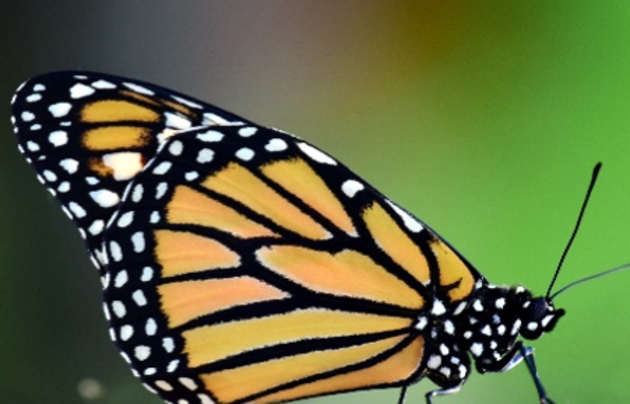Introduction
An animal that uses camouflage is one that has adapted itself to look exactly like its surroundings or to blend in with it - it makes them very difficult to spot! For example, if an animal lives in woodland with lots of leaves, trees and branches, it might have adapted to have a brown coat which blends in with the rest of the environment.
For lots of animals, it’s a defense mechanism or a hunting tactic.
Camouflage can also be called cryptic colouration.
There are four main types of camouflage:
Concealing colouration - This is when an animal disguises itself against its background by being the same colour as it.
Disruptive colouration - This is when stripes, spots or other patterns make it hard for other animals to distinguish the outline of their bodies.
Disguise - This is similar to concealing colouration; however, instead of using colour, animals will imitate the texture or shape of their surroundings instead.
Mimicry - These animals pretend to look like other animals and are sometimes called 'imposters'. This is common in prey animals who pretend to be a different animal which is toxic or poisonous to their predator.
Reasons
Animals can use camouflage for lots of different reasons, but the overarching reason is to survive. They use camouflage to hide their location and identity, particularly from predators if they’re a prey species. On the other hand, some predator species also use camouflage to sneak up on their prey. If the prey has no idea they’re there, that makes it much easier to hunt!
Camouflage varies from species to species. If a species has feathers or scales, they can shed and camouflage themselves much more regularly and easily than an animal with fur. This is why most animals with fur camouflage themselves by season.
Animals have adapted to use camouflage as a result of natural selection: those who have used camouflage are the ones who have survived in the wild.
Examples
There are hundreds of creatures in the animal kingdom that camouflage themselves, and perhaps some are still undiscovered because they do it so well. Here are a few examples of animals that use camouflage.
Chameleon
When you think of camouflage, more often than not, you think of the chameleon. But actually, when chameleons change the colours of their scales, the primary function isn’t to camouflage themselves against their surroundings (though this is a handy side-effect).
In fact, chameleons change colour to regulate their body temperature and to send messages and signals to their fellow chameleons. That being said, they’re still a fantastic example of camouflage. Their scales can completely change colour to match their surroundings (usually the rainforest or a desert), which makes it impossible for predators to find them.
Did you know that some cells in a chameleon’s skin have crystals called guanine crystals? To change the colour of their skin, chameleons adjust the space between these crystals, which affects how light reflects off their skin.
Arctic Fox
The Arctic fox has adapted its white fur to blend in with the vast, snowy Arctic tundra perfectly. But did you know that when the season changes and the ice melts away to reveal grassland, the fox changes colour too? While we instinctively think of the Arctic fox as white, it sheds its fur to make way for a brown coat in the summer months. This allows it to blend in once again and hunt effectively for its prey.
Stick Insect
The clue is in the name - this insect looks exactly like your average stick or branch. This creature has adapted to have a bark-like appearance, which lets it completely camouflage itself against trees. Sometimes, they even sway back and forth in the wind just like a branch to convince predators that they aren’t there at all.
Sea Turtle
Sea turtles use the patterns on their shells to camouflage themselves against the seafloor. The pattern on their shells is similar to the patterns that sunlight creates when it reflects into the water and onto the seafloor. This helps them to hide from their predators, such as tiger sharks and orcas.
Sea Urchin
While the sea urchin’s appearance hasn’t been adapted to mimic its surroundings, it still uses camouflage to protect itself. On the seafloor, it gathers shells, rocks and anything else it can find to help it blend in and hide from predators.
Viceroy Butterfly
To protect itself from predators, the Viceroy butterfly completely mimics the appearance of a Monarch butterfly. Viceroy butterflies are non-poisonous, but the Monarch is poisonous. Therefore, if its predators think its poisonous, they won't try to eat it!
Zebra
To us humans, zebras don’t appear to be camouflaged at all. Their distinctive black and white stripes stand out against the brown savanna where they live and make them easy to spot. However, their main predator, lions, are colour blind. Zebras also live in herds, and their stripes make it difficult for lions to pick out a single zebra to hunt. Therefore, a zebra’s stripes help them to blend in with the herd, rather than their surroundings.
Leopard and Cheetah
Leopards and cheetahs are both well-known for their spots and they play a huge role in these species’ camouflage. The spots help to disguise the outline of the animal’s body, allowing it to blend in with the brown savanna landscape. Using this camouflage tactic, leopards and cheetahs can easily sneak up on their prey and hunt.












